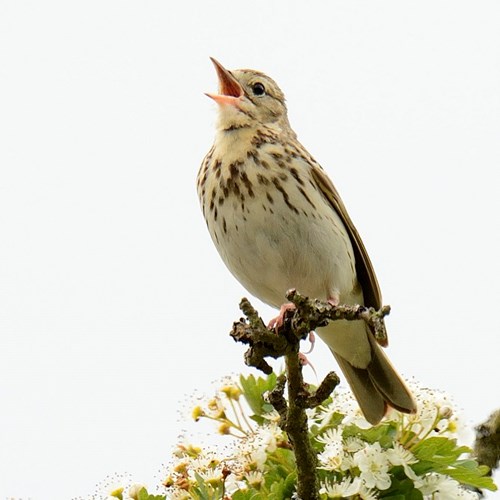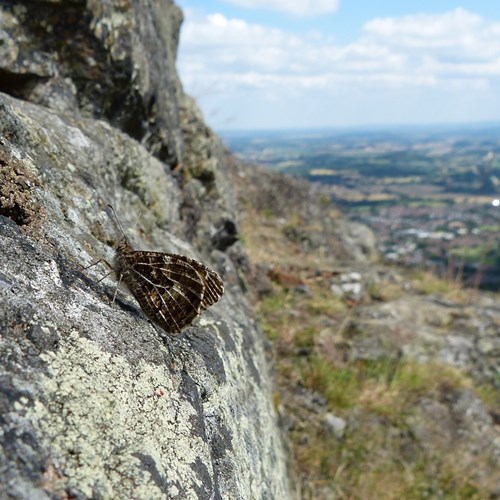Less than two years ago, the Trust undertook works to restore an area of open habitats on the western side of Pinnacle Hill. Work involved the felling of secondary woodland and following this the area looked disturbed and bare.
However, nationally rare grassland and scrub habitats have grown back rapidly with a wonderful mix of native grasses and herbs, now in flower, amongst scrub and scattered trees.
Conservation Manager Jonathan Bills said “This spring we’ve been really pleased to record two male tree pipits singing here. This bird was one of many species that we had hoped would benefit so it’s very rewarding to have them setting up territories here already. We understand that the appearance of the work was shocking at first, but these wildlife sightings show that it’s worth it”.
Tree pipits are newly arrived in the UK after their spring migration from central Africa. In the UK they are red-listed as a species with significant population declines observed in the UK since the 1970.
Much of the Malvern Hills and Commons are designated as a Site of Special Scientific which provides additional protections and recognition of the rare wildlife found here. This designation identifies the wildlife (and other features) that are special and outlines the management required to conserve and maintain them, including the open habitats on the hill tops and upper slopes. Many of the species found in the open habitats would be lost if woodland was allowed to develop.
Restoring the open habitats lost to recent tree growth is also providing new homes and habitats for meadow pipits, viviparous lizards, grayling butterflies, harebells, mosses and lichens.
Tree pipit image (c) Mick Colquhoun


